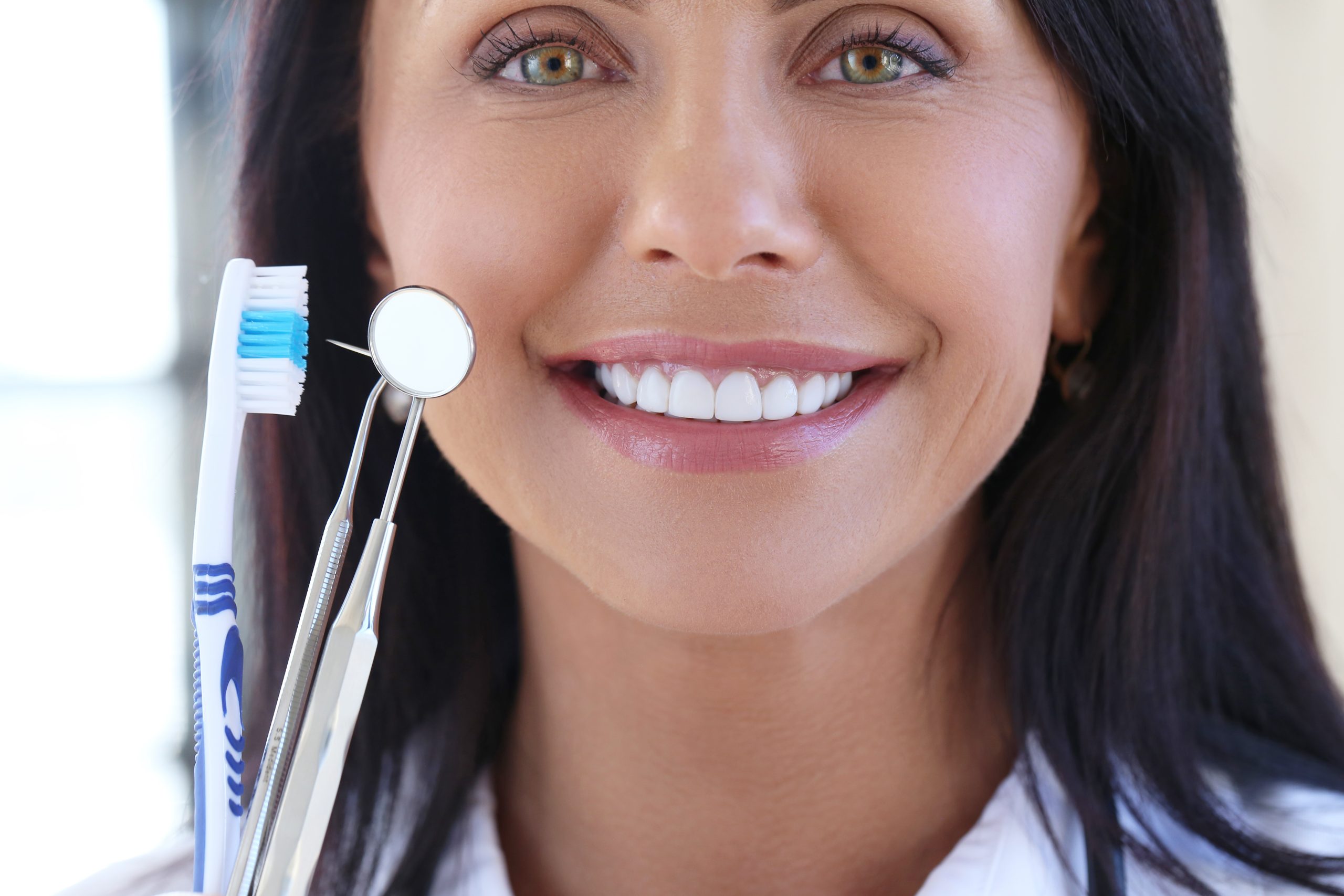Teeth Cleaning

Dental teeth cleaning involves removing plaque (soft, sticky, bacteria infested film) and tartar (calculus) deposits. These deposits built up on the teeth over time. Your teeth are continually bathed in saliva. Which contains calcium and other substances that help strengthen and protect the teeth. While this is a good thing, it also means that we tend to get a build-up of calcium deposits on the teeth. This chalky substance will eventually build up over time, like limescale in a pipe or kettle. Usually it is tooth coloured and can easily be mistaken as part of the teeth. However it also can vary from brown to black in colour.
If the scale, or calculus (tartar, as dentists like to call it) is allowed to accumulate on the teeth. It will unfortunately provide the right conditions for bacteria to thrive next to the gums. The purpose of the cleaning and polishing is basically to leave the surfaces of the teeth clean and smooth. This is so that bacteria are unable to stick to them. Providing you a better chance of keeping the teeth clean during your regular home care.
Also it leaves your teeth feeling lovely and smooth and clean. Which is nice when you run your tongue around them. Actually, come to think of it, there’s nothing worse than someone you fancy running their tongue around your teeth and finding a piece of spinach or something! Still, if they’re hungry…
The professional cleaning of teeth is sometimes referred to as prophylaxis (or prophy for short). It’s a Greek word which means “to prevent beforehand” – in this case, it helps prevent gum disease.
How are dental cleanings done?
The dental hygienist or dentist uses specialized instruments to gently remove these deposits without harming the teeth. The instruments which may be used during your cleaning, and what they feel like, are described below.
Ultrasonic instrument
Commonly used first is an ultrasonic instrument which uses tickling vibrations to knock larger pieces of tartar loose. It also sprays a cooling mist of water while it works to wash away debris. Keeping the area at a proper temperature. The device typically emits a humming or high pitched whistling sound. This may seem louder than it actually is. This is because the sound may get amplified inside your head. Just like when you put an electric toothbrush into your mouth.
The ultrasonic instrument tips are curved and rounded and are always kept in motion around the teeth. They are by no means sharp since their purpose is to knock tartar loose and not to cut into the teeth. It is best to inform the operator if the sensations are too strong or ticklish so that they can adjust the setting appropriately on the device or modify the pressure applied.
Fine hand tools
Once the larger pieces of tartar are gone. The dental worker will switch to finer hand tools (called scalers and curettes in dental-speak) to remove smaller deposits and smoothen the tooth surfaces. These tools are curved and shaped to match the curves of the teeth. They allow smaller tartar deposits to be removed by carefully scraping them off with a gentle to moderate amount of pressure. Just like taking a scrubbing brush to a soiled pot. The dental worker has to get the areas clean and smooth.
Polishing
Once all the surfaces are smooth. The dental worker may polish your teeth. Polishing is done using a slow speed handpiece with a soft rubber cup that spins on the end. Prophylaxis paste, a special gritty toothpaste – like material, is scooped up like ice cream into the cup and spun around on the teeth to make them shiny smooth.
Fluoride
Your dentist may also apply fluoride. This is the final part of the dental teeth cleaning! Fluoride comes in many different flavours such as chocolate, mint, strawberry, cherry, watermelon, pina colada and can be mixed and matched. Just like ice cream at a parlour for a great taste sensation! Make no mistake though. This in-office fluoride treatment is meant for topical use only. On the surfaces of the teeth. And swallowing excessive amounts can give a person a tummy ache as it is not meant to be ingested.
Fluoride foam or gel is then placed into small, flexible foam trays and placed over the teeth for 30 seconds. Afterwards the patient is directed to spit as much out as possible into a saliva ejector. The fluoride helps to strengthen the teeth since the acids from bacteria in dental tartar and plaque will have weakened the surfaces. It is best not to eat, drink or rinse for 30 minutes after the fluoride has been applied.
Is it going to be painful?
Most people find that teeth cleaning is painless, and find the sensations described above – tickling vibrations, the cooling mist of water, and the feeling of pressure during “scraping” – do not cause discomfort. A lot of people even report that they enjoy dental teeth cleaning and the lovely smooth feel of their teeth afterwards! There may be odd zingy sensations, but many people don’t mind as they only last a nanosecond.
Be sure to let your dentist/hygienist know if you find things are getting too uncomfortable for your liking. They can recommend various options to make the cleaning more enjoyable.
In case you may have had painful cleaning experiences in the past, a spot of nitrous oxide can often make all the difference. You could also choose to be numbed. If you find the scaling a bit uncomfortable because the gum tissues (rather than the teeth themselves) are sensitive, topical numbing gels can be used.



